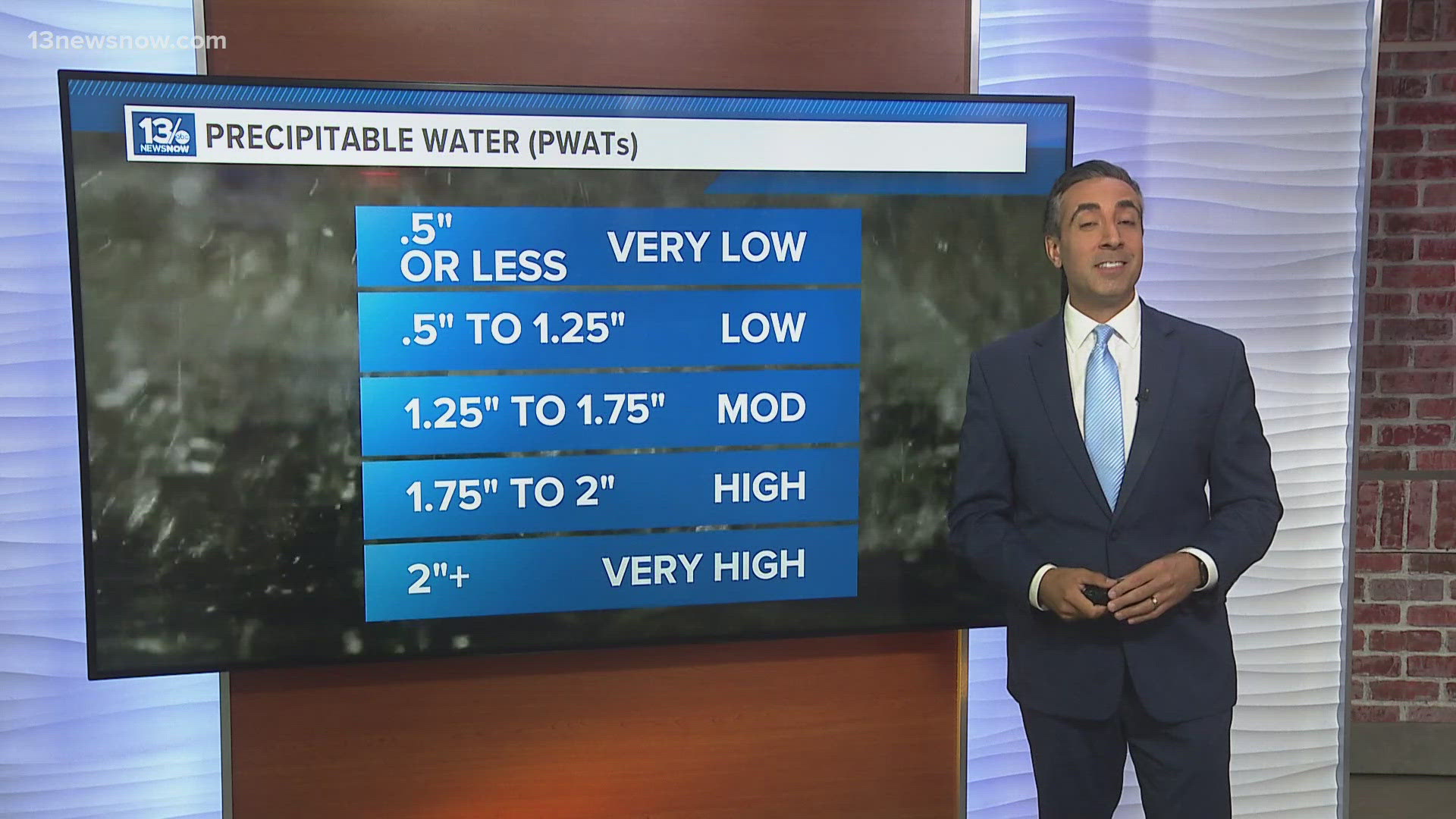NORFOLK, Va. — Meteorologists use several tools at their disposal that help to determine the amount of moisture that is present in the atmosphere at any given time. Two recognizable examples of this used in our forecasts all the time are relative humidity and dew point.
But there is another, lesser-used method called precipitable water, or PWATs. What is it and how does it help us better predict the weather?
A good explanation of PWATs is to take all the water vapor in an entire column of air, condense it and measure it. This in essence is the amount of moisture that is available to fall as precipitation. Meteorologists use precipitation because this becomes useful in snowfall forecasting as well as rain forecast totals.
High precipitable water values are typically found in, you guessed it, warm and very humid climates.
Here’s how we gauge what is considered high and low.


During the Summer months, meteorologists here in Hampton Roads can tap into patterns that deliver air masses rich in available moisture and high precipitable water amounts.
So, why does that even matter?
Let’s take for example our coming rain threat for later this week. A cold front will arrive from the west, that’s our trigger. It will collide with our warm, moisture-laden air mass in place, forcing it to rise and condense forming tropical downpours and thunderstorms. Because we will have a high PWAT environment in place, say on the order of 2” or so that will mean the atmosphere has 2” give or take of moisture available to fall as rain, most of it heavily.
In conclusion, a high precipitable water reading can come in handy when forecasting rain totals, flood threats and even snow amounts. If moisture is available, the atmosphere can turn that into hefty precipitation totals, all you need is a trigger to initiate the transition.

